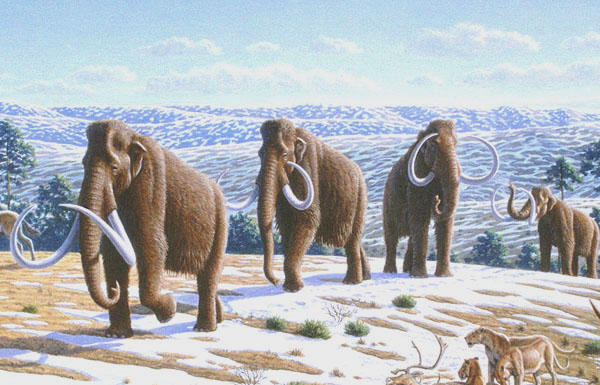 Since we had a mastodon tooth as our last Fossil of the Week, paleontological symmetry demands we have a mammoth tooth this week. The fossil above also comes from the productive bogs of Holmes County a few miles south of Wooster.
Since we had a mastodon tooth as our last Fossil of the Week, paleontological symmetry demands we have a mammoth tooth this week. The fossil above also comes from the productive bogs of Holmes County a few miles south of Wooster.
Our tooth is from a young woolly mammoth (Mammuthus primigenius). These were true elephants, unlike the mastodons which were only distant cousins in another family. You can tell a mammoth tooth from a mastodon tooth by the flat ridges on its chewing surface rather than pointy cusps.
 The woolly mammoth had long tusks (one of which we have in a display case outside my office) and, of course, plenty of long hair to keep it warm in the tundra environments it inhabited. They were grazers, apparently digging up grass and other ground vegetation with their tusks.
The woolly mammoth had long tusks (one of which we have in a display case outside my office) and, of course, plenty of long hair to keep it warm in the tundra environments it inhabited. They were grazers, apparently digging up grass and other ground vegetation with their tusks.
Mammuthus primigenius appeared about 150,000 years ago during the Pleistocene, and the last individual died surprisingly only 3700 years ago on a small Alaskan island. They are well known from frozen remains in Siberia — and from a new Japanese attempt to clone them from frozen tissue. (I’ve heard that one so many times …)
In June 2008, a Wooster Independent Study team saw cross-sections of mammoth footprints at The Mammoth Site, Hot Springs, South Dakota (see below). They could only be identified as such because of the dozens of mammoth skeletons around them!





I wonder how many people have that exact picture of mammoth footprints in their personal photo collections. I’ll have to show you my photos from the Mammoth Site.